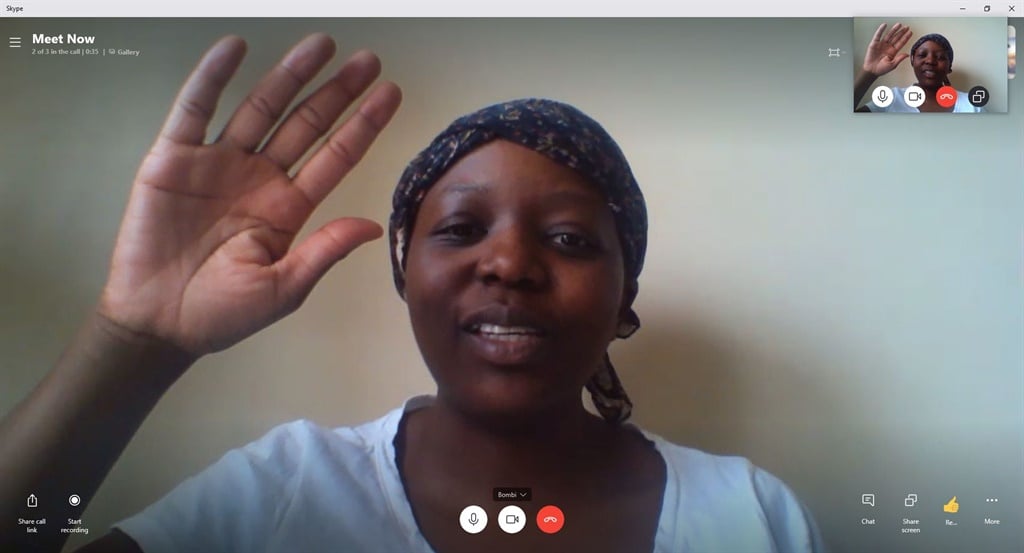

It is fairly obvious if you have problems with having multiple zoom connections if the home upload speed isn’t fast enough to accommodate all connections. The average home experiencing problems when working at home during the pandemic is unlikely to diagnose the reasons for the poor bandwidth fully. There are a half dozen similar limitations that ISPs never talk about that affect available bandwidth.
ZOOM BANDWIDTH REQUIREMENTS DOWNLOAD
This never mattered in the past when everybody cared about download bandwidth, but an interference-laden 10 Mbps upload stream is not going to deliver a reliable 10 Mbps connection. For example, the upload bandwidth in a cable company network uses the worse spectrum inside the cable network-the part that is most susceptible to interference. Cable broadband networks are also susceptible to radio interference-your connection will get a little worse when your neighbor is operating a blender or microwave oven. ISPs don’t want to talk about it, but events like drop wires swinging in the wind can affect a DSL or cable modem connection. Unfortunately, a home using DSL or cable modems doesn’t only have to worry about how other in the home are using the bandwidth, because these services used shared networks within neighborhoods, and as the demand needs for the whole neighborhood increase, the quality of the bandwidth available to everybody degrades. This is easily demonstrated if somebody in a home tries to upload a giant data file while somebody else is using Zoom-the Zoom connection can easily drop temporarily below the needed bandwidth threshold and either freeze or drop the connection. Without QoS, a degraded bandwidth signal is likely to affect everybody using the Internet. If you were able to prioritize a school connection, then any problems inside the network would affect other connections first and would maintain a steady connection to a school. Home broadband networks don’t provide quality of service, which means that homes cannot prioritize data streams.


A lot of this problem is going to be fixed with WiFi 6 and 6 GHz bandwidth which together will add a lot of new channels inside the home. It’s not unusual for the WiFi network to add a 20% to 30% overhead, meaning that collisions of WiFi signals effectively waste usable bandwidth. Today’s version of WiFi only has a few channels to choose from, and so the multiple connections on the WiFi network interfere with each other. WiFi networks can be extremely inefficient when multiple people are trying to use the same WiFi channels at the same time. But bandwidth use in a house is not that simple, and a lot of other factors contribute to the quality of bandwidth connections within a home.

For instance, if four people in a home wanted to have a Zoom conversation with another person, the home would need a simultaneous connection of 8 Mbps both up and down. The simplistic way to look at bandwidth needs is to add up the various uses. But houses are also using traditional bandwidth during the pandemic like watching videos, gaming, web browsing, and downloading large work files. Straight math shows fairly large requirements if three or four people are trying to make these same kinds of 2-way simultaneous connections at the same time.
ZOOM BANDWIDTH REQUIREMENTS SOFTWARE
Connections to work and schools servers vary in size depending upon the software being used, but the VPNs from these connections are typically as large or larger than the Zoom requirements. Telemedicine connections tend to be even larger than this and require the simultaneous use of both upload and download bandwidth. The amount of download bandwidth increases with each person connected to the call, meaning Zoom recommends 6 Mbps download for a meeting with three other people. Zoom says that a home should have a 2 Mbps connection, both upload and download, to sustain a Zoom session between just two people. Consider the following bandwidth needs listed by Zoom: These new requirements have significantly different bandwidth needs when a home’s big bandwidth need was watching multiple video streams at the same time. The simplest explanation for this is that homes were suddenly expected to connect to a school or work servers, use new services like Zoom, or make telemedicine connections to talk to doctors. Families often found that multiple adults and students couldn’t share the bandwidth at the same time. But the pandemic also showed many additional millions of homes that their current ISP connection isn’t up to snuff for working or doing schoolwork from home. The pandemic made it clear that the millions of homes with no broadband or poor broadband were cut off from taking the office or the school home.


 0 kommentar(er)
0 kommentar(er)
